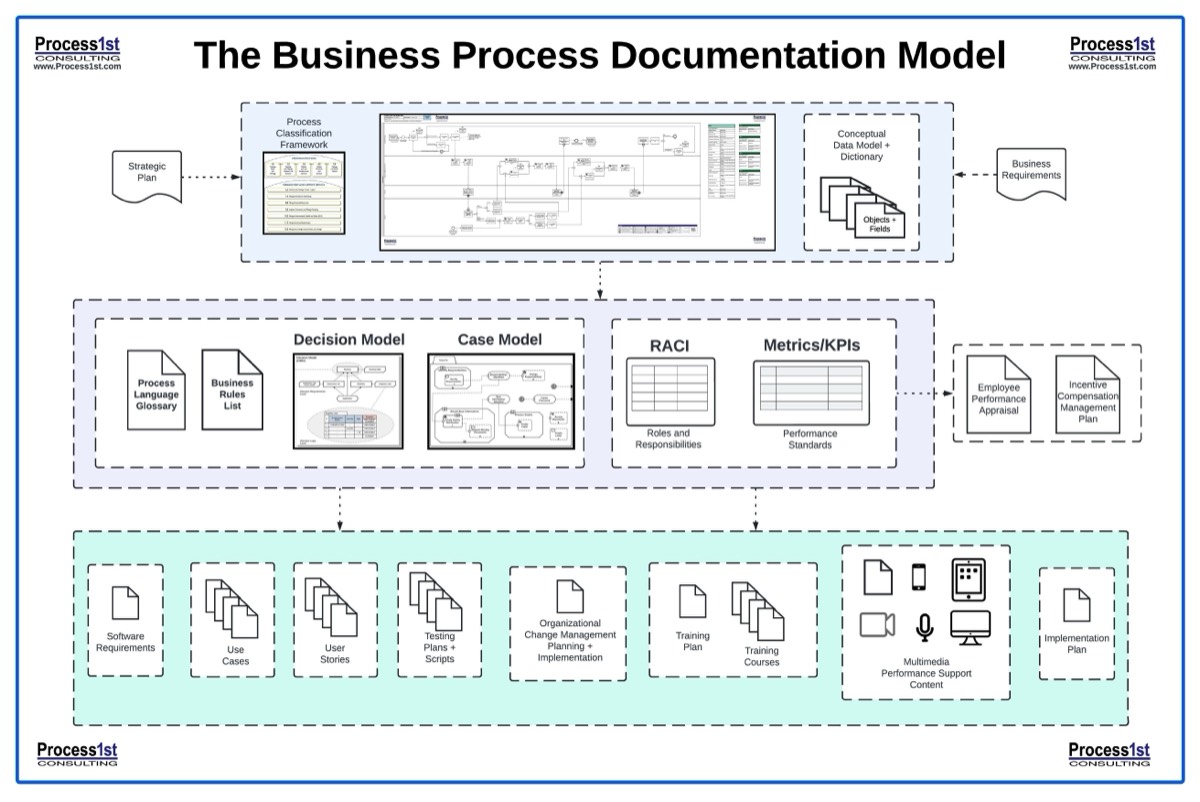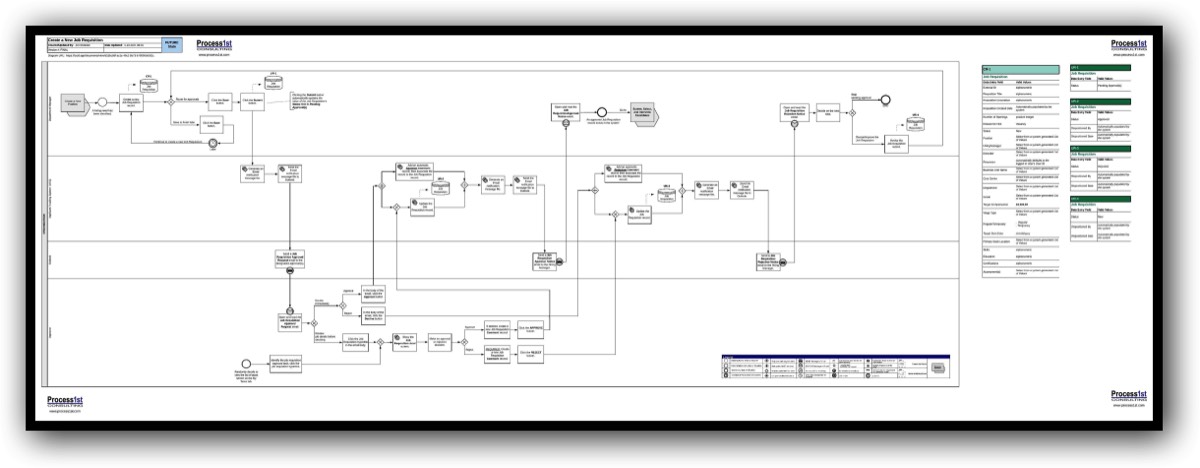Business Process Mapping and Modeling
If you search the Internet for the definition of a business process model, you'll typically find that most self-professed process modeling experts describe a process model as a flowchart or workflow diagram. You'll see mentions of activity diagrams, dataflow diagrams, SIPOC diagrams, and Value Stream maps. The point is, they all consider a model as some type of diagram. A business process model is much more than just a diagram.
The Process1st business process documentation methodology considers a Business Process Map as one component of an overall Business Process Model. A flowchart alone can't thoroughly and effectively specify all of the important information about a business process. Any serious attempt at process improvement requires a lot more information than what a flowchart can communicate.
The Process1st Business Process Documentation Model consists of a well-defined, logically-integrated set of documents that offers a thorough, complete, accurate, and precise understanding of a business process. It supports the needs of every stakeholder involved in the development, performance, management, measurement, and improvement of a business process.
For more information, send me a message through the Contact page.
The Process1st business process documentation methodology considers a Business Process Map as one component of an overall Business Process Model. A flowchart alone can't thoroughly and effectively specify all of the important information about a business process. Any serious attempt at process improvement requires a lot more information than what a flowchart can communicate.
The Process1st Business Process Documentation Model consists of a well-defined, logically-integrated set of documents that offers a thorough, complete, accurate, and precise understanding of a business process. It supports the needs of every stakeholder involved in the development, performance, management, measurement, and improvement of a business process.
For more information, send me a message through the Contact page.

Example Business Process Map
Click here, or on the image above, to see a high-resolution image of this business process map.
The Benefits of Business Process Modeling
- Easily, Efficiently and Effectively Communicates Information
- Reveals Business Process Risks, Problems and Opportunities
- Supports and Enhances Training
- Improves Software Development Efficiency and Productivity
- Reduces Software Development Costs
- Supports Organizational Change Management
- Supports Governance and Compliance Responsibilities
- Eliminates the need to “reinvent the wheel” every time you begin a new process improvement project
Common Uses of Business Process Models
The most common applications of business process models are:
- Business Process Improvement
- Business Process Reengineering
- Software Projects
- Employee Onboarding and Training
- Customer Training and Support
- Strategic Planning
- Legal and Regulatory Compliance
- Internal and External Audits
- Mergers and Acquisitions
